域外案例
第41届世界遗产委员会会议诞生21项新世界遗产(二)
第41届世界遗产委员会会议
诞生21项新世界遗产
(二)
文化遗产介绍(1)
Introduction of Cultural World Heritage sites (1)
鼓浪屿:国际历史社区
Kulangsu: A historic international settlement
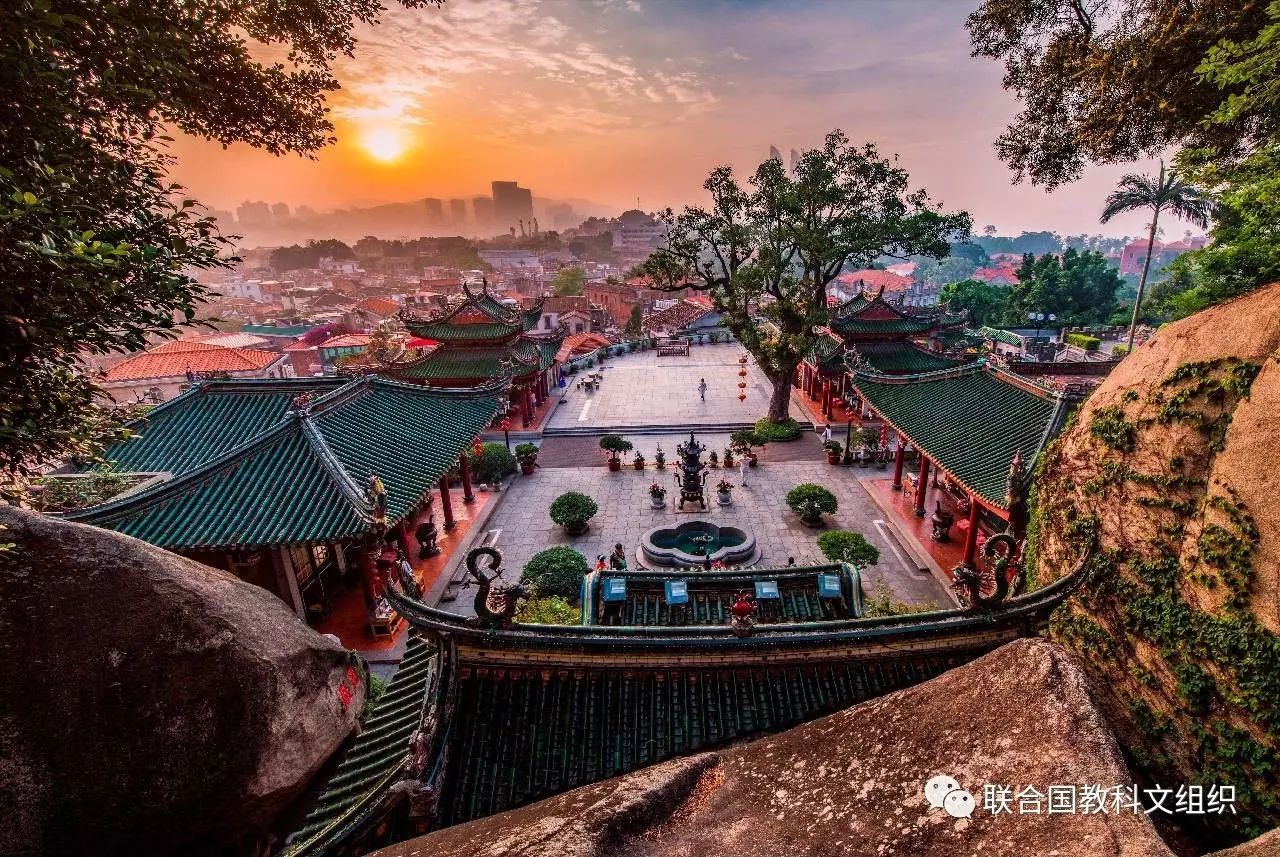
Sunlight Rock Temple towards the rising sun © Cultural Heritage Conservation Center of THAD
鼓浪屿是九龙江入海口处的一个小岛,与厦门岛隔(鹭江)海(峡)相望。随着1843年厦门的开埠通商及1903年鼓浪屿被划为公共地界,使得这座位于中华帝国南部海滨的岛屿迅速成为中外交流的重要窗口。鼓浪屿是由文化交流产生的文化融合的突出例证,其城市肌理充分体现了这一点。在鼓浪屿,不同的建筑风格在混合在一起,包括闽南传统建筑风格、西方新古典主义风格、殖民地外廊风格等等。这里形成的一种新建筑运动,即厦门装饰风格,“AmoyDeco”,在混合了上述风格后又融入了二十世纪初的现代主义风格与装饰风艺术,是对多种风格影响融合最为独特的见证。
Kulangsuis a tiny island located on the estuary of the Chiu-lung River, facing the city of Xiamen. With the opening of a commercial port at Xiamen in 1843, and the establishment of the island as an international settlementin 1903, this island off the southern coast of the Chinese empire suddenly became an important window for Sino-foreign exchanges. Kulangsuis an exceptional example of the cultural fusion that emerged from these exchanges, which remain legible in its urban fabric. There is a mixture of different architectural styles including Traditional SouthernFujian Style, Western Classical Revival Style and Veranda Colonial Style. The most exceptional testimony of the fusion of various stylisticinfluences is a new architectural movement, the Amoy Deco Style, which is a synthesis of the Modernist style of the early 20th century and Art Deco.
2姆班扎刚果:刚果古王国的古都遗迹(安哥拉)
Mbanza Kongo, Vestiges of the Capital of the former Kingdom of Kongo (Angola)
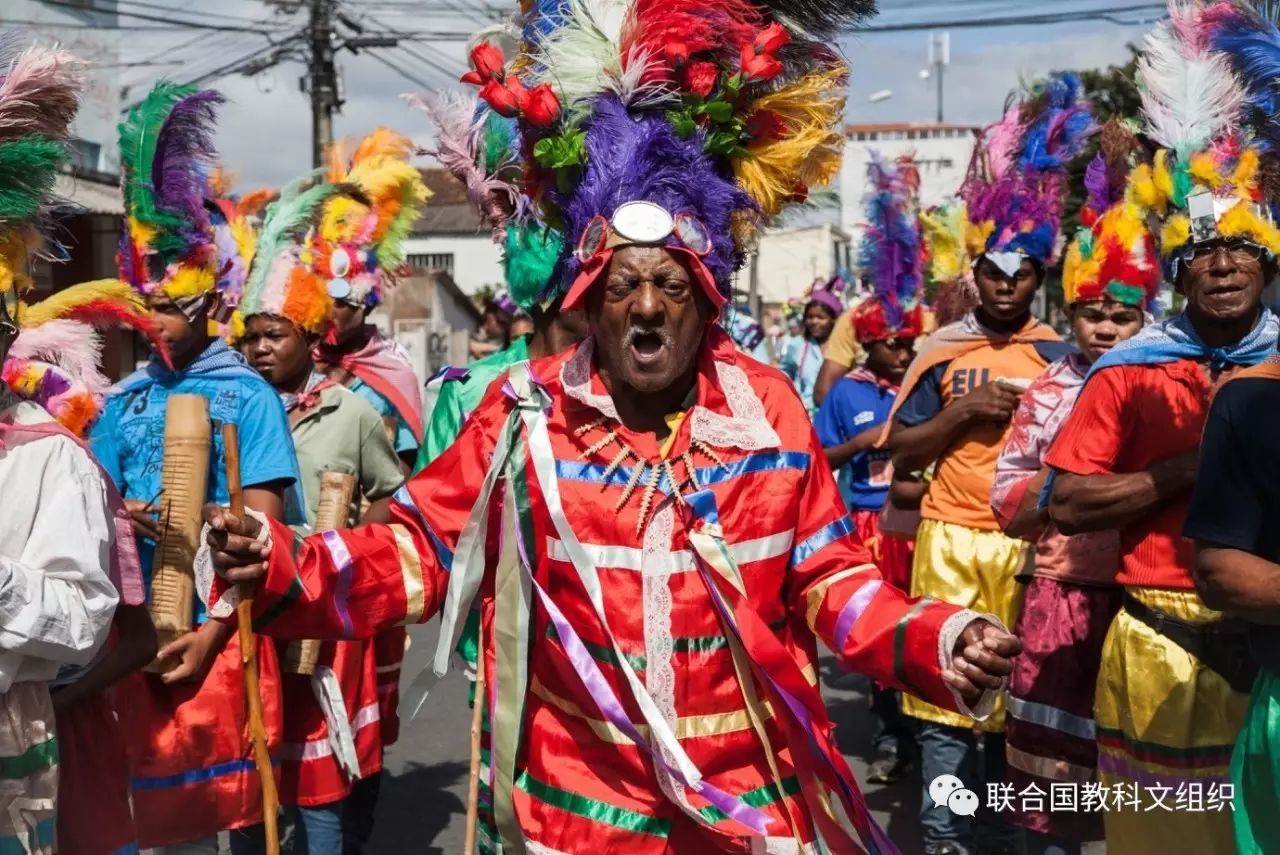
姆班扎刚果城坐落于海拔570米的高原上,是刚果古王国的政治和宗教中心。刚果古王国是14至19世纪非洲南部最大的政合国之一。城市的历史文化区围绕着王宫、法庭、神树和王室墓园而建,15世纪葡萄牙殖民者进入后,殖民者运用欧洲建造技法和本地建材为城市增添了石头建筑。在整个撒哈拉以南非洲中,姆班扎刚果最突出地展示了基督教和葡萄牙文化的传入给非洲中部带来的巨大影响。
Thetown of Mbanza Kongo, located on a plateau at an altitude of 570 metres, was the political and spiritual capital of the Kingdom of Kongo,one of the largest constituted states in Southern Africa from the 14th to 19th centuries. The historical area grew around the royal residence, the customary court and the holy tree, as well as the royal funeral places. When the Portuguese arrived in the 15th century they added stonebuildings constructed in accordance with European methods to the existing urban conurbation built in local materials. Mbanza Kongo illustrates, more than anywhere in sub-Saharan Africa, the profound changes caused by the introduction of Christianity and the arrival of the Portuguese into Central Africa.
3瓦隆古码头考古遗址(巴西)
Valongo Wharf Archaeological Site (Brazil)
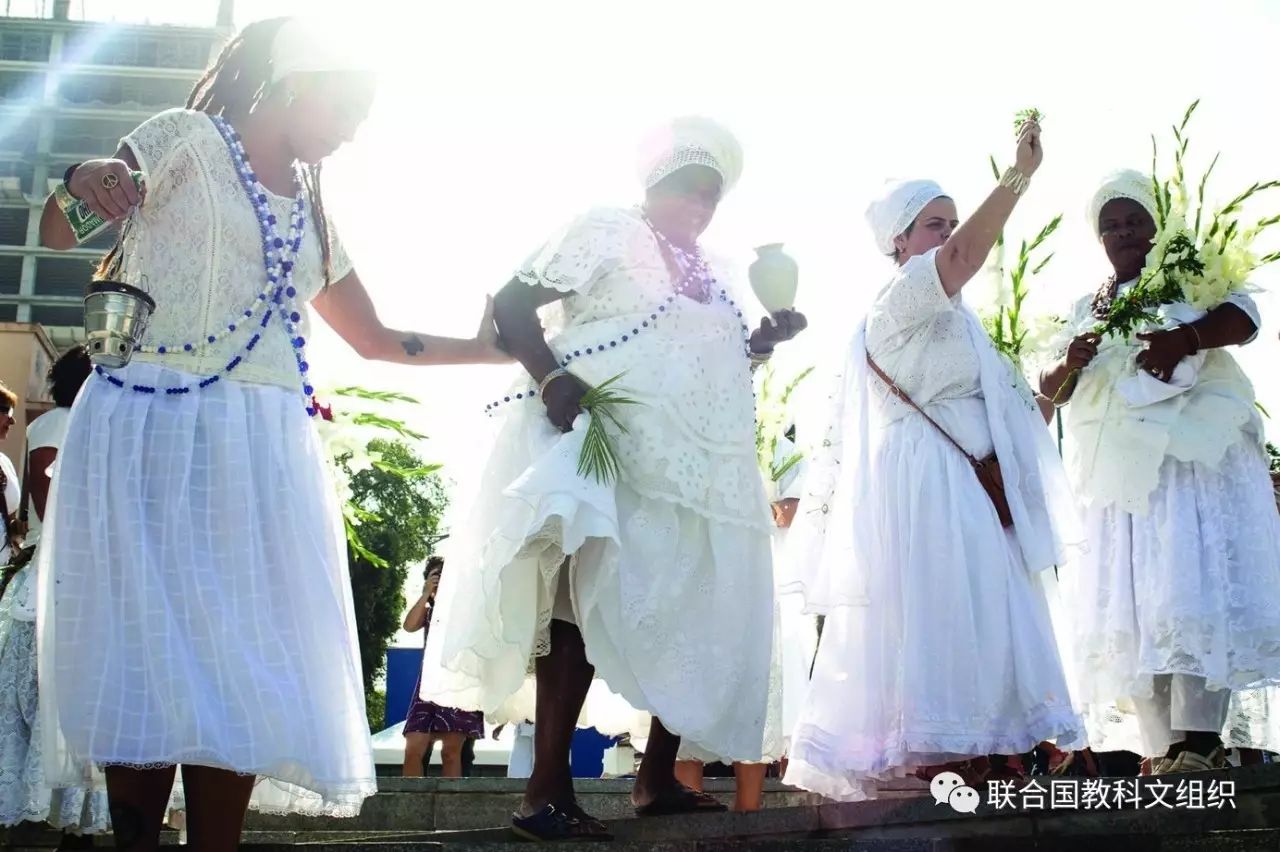
4th Washing of the Wharf © João Maurício Bragança
瓦隆古码头考古遗址这一遗址位于里约热内卢的中心,囊括了整个商业日报广场。此处是里约的老港口区,1811年起此建立起了石码头,用来接收抵达南美大陆的非洲奴隶。据估计约有90万非洲奴隶是经瓦隆码头抵达美洲的。遗址由好几层考古遗迹所组成,最低的一层是一种被称作“花生糖”铺石路面,是瓦隆古码头最初的形态。这是与非洲奴隶抵达美洲大陆相关的最重要的实体遗迹。
ValongoWharf Archaeological Site is located in central Rio de Janeiro and encompasses the entirety of Jornal do Comércio Square. It is in the former harbour area of Rio de Janeiro in which the old stone wharf was built for the landing of enslaved Africans reaching the South American continent from 1811 onwards. An estimated 900,000 Africans arrived in South America via Valongo. The physical site is composed of several archaeological layers, the lowest of which consists of floor pavings in pé de moleque style, attributed to the original Valongo Wharf. It is themost important physical trace of the arrival of African slaves on the American continent.
4古伊奢那补罗考古遗址的三波坡雷古寺庙区(柬埔寨)
Temple Zone of Sambor Prei Kuk, Archaeological Site of Ancient Ishanapura (Cambodia)
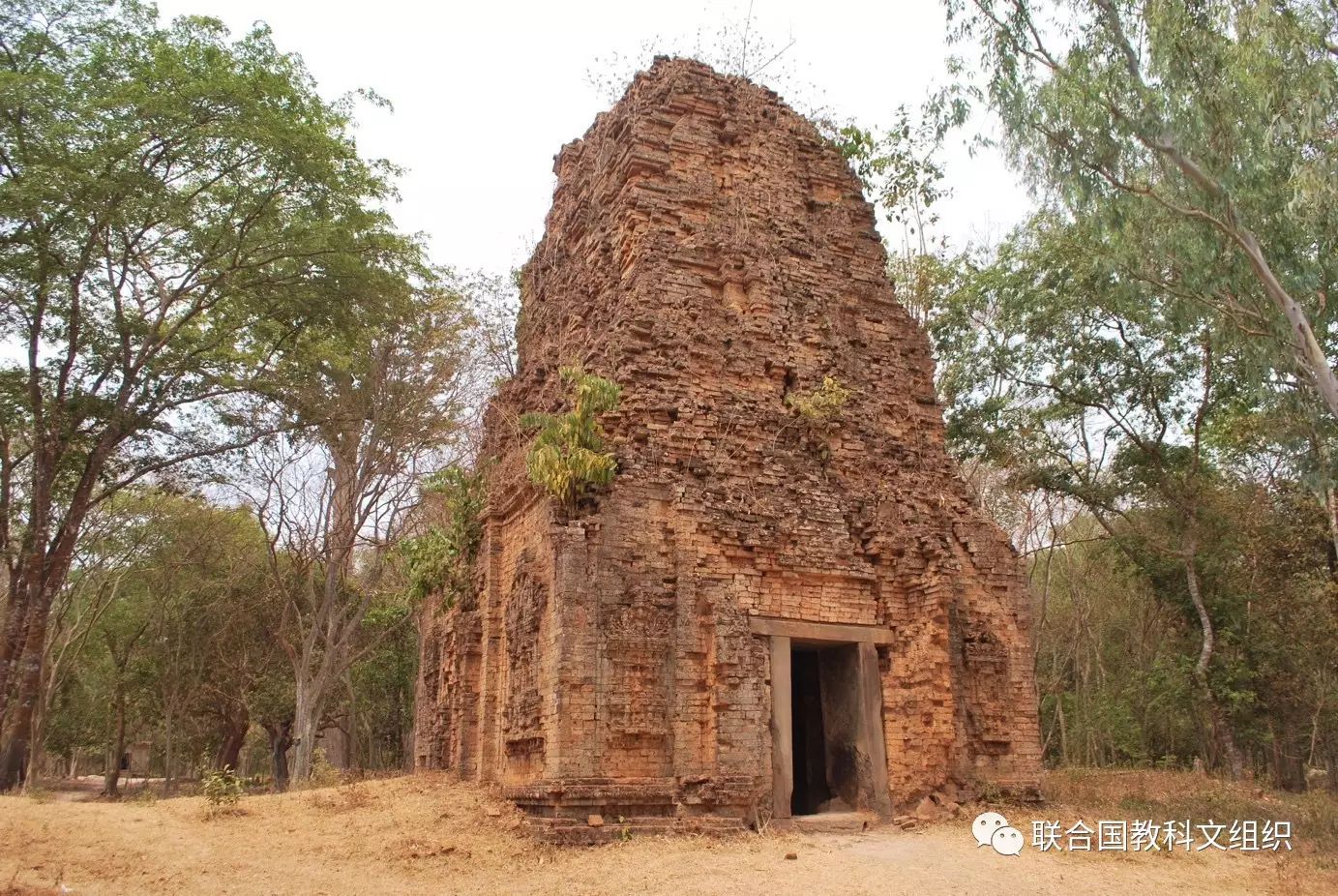 Sambor Prei Kuk Archaeological Site © So Sokun Theary
Sambor Prei Kuk Archaeological Site © So Sokun Theary
三波坡雷古,高棉语意为“丛林中的寺庙”,是6世纪末至7世纪初的真腊王国的首都伊奢那补罗所在地。这一遗迹占地25平方公里,包含有一个带有防御工事的城市中心以及若干寺庙,其中有十座八角形的庙宇具有别的东南亚类似寺庙所没有的独特特征。它们的砂岩建筑装饰是吴哥时代以前所具有的独特风格,也就是所谓的三波坡雷古风格。这一遗址所发展的建筑艺术也扩散到了这一地区的其他地方,并成为吴哥时代独有的高棉风格的基础。
Thearchaeological site of Sambor Prei Kuk, “the temple in the richness of the forest” in the Khmer language, has been identified as Ishanapura, the capital of the Chenla Empire that flourished in the late 6th and early 7th centuries CE. The vestiges of the city cover an area of 25 square kilometres and include a walled city centre as well as numerous temples, ten of which are octagonal, unique specimens of their genre in southeast Asia. Decorated sandstone elements in the site are characteristic of the pre-Angkor decorative idiom, known as the Sambor Prei Kuk Style. Some of these elements, including lintels, pediments andcolonnades, are true masterpieces. The art and architecture developed here became models for other parts of the region and lay the ground for the unique Khmer style of the Angkor period.
516至17世纪威尼斯共和国的防御工事:西方的陆地之国到海洋之国(克罗地亚、意大利、黑山)
Venetian Works of Defence between 15th and 17th centuries: Stato da Terra -- western Stato da Mar (Croatia, Italy, Montenegro)
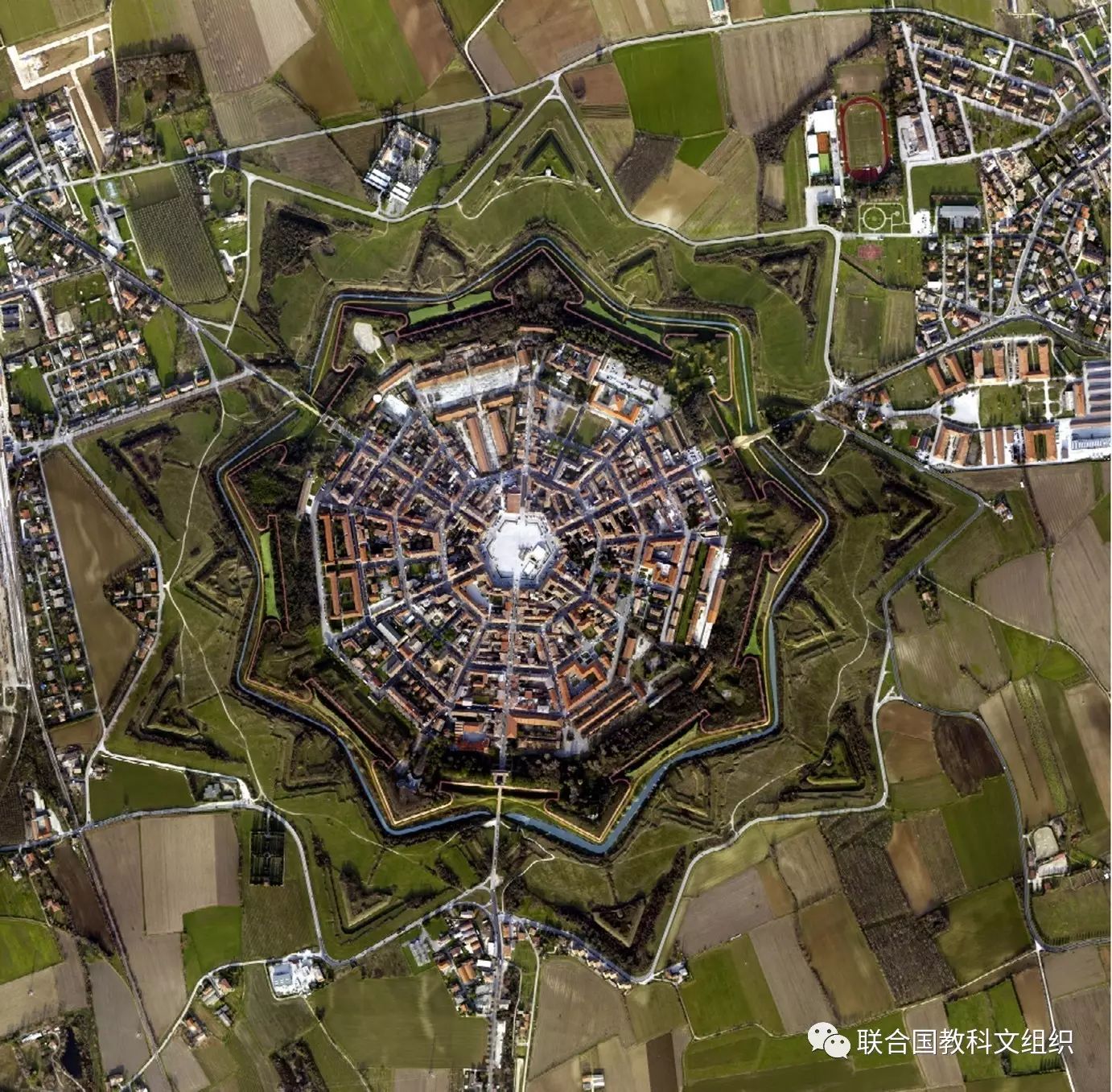 Orthophoto of City Fortress of Palmanova (Italy) © Municipality of Palmanova
Orthophoto of City Fortress of Palmanova (Italy) © Municipality of Palmanova
这座遗址包括15座位于意大利、克罗地亚及黑山的防御工事,它们横跨1000公里,从意大利的隆巴多地区延伸至亚得里亚海的东海岸。陆地之国的防御工事在西北方向保护着威尼斯,而海洋之国的防御工事则保护着亚得里亚海通往东方黎凡特的海洋通道及关口。这些防御工事对维护“最庄严的威尼斯共和国”的力量和扩张必不可少。引入大炮用火药在军事的技术及建筑上具有重要的变革意义,这也表现在后来扩展到整个欧洲的星形要塞的建筑理念上。
Thisproperty consists of 15 components of defence works in Italy, Croatia and Montenegro, spanning more than 1,000 kilometres between the Lombard region of Italy and the eastern Adriatic Coast. The fortifications throughout the Stato da Terra protected the Republic of Venice from other European powers to the northwest and those of the Stato da Mar protected the sea routes and ports in the Adriatic Sea to the Levant. They were necessary to support the expansion and authority of the Serenissima. The introduction of gunpowder led to significant shifts in military techniques and architecture that are reflected in the design ofso-called alla modernaI bastioned, fortifications, which were to spreadthroughout Europe.
6格陵兰岛库加塔:冰盖边缘的北欧及因纽特农业(丹麦)
Kujataa Greenland: Norse and Inuit Farming at the Edge of the Ice Cap (Denmark)
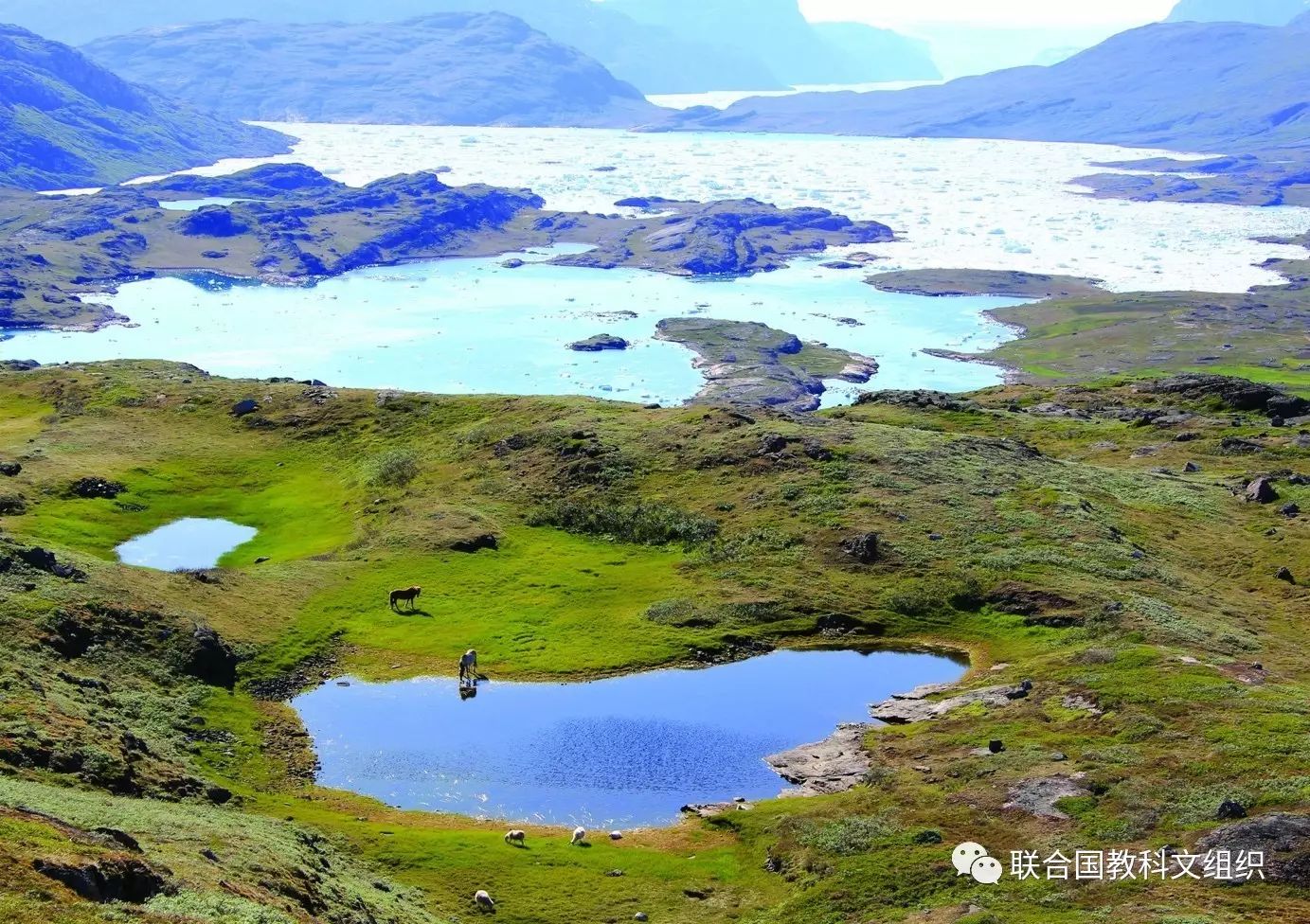 Horsesand sheep grazing in a highland meadow near Tasiusaq. In the backgroundthe ice-filled Tasiusaq Fjord. © Niels Christian Clemmensen / ChristianK. Madsen
Horsesand sheep grazing in a highland meadow near Tasiusaq. In the backgroundthe ice-filled Tasiusaq Fjord. © Niels Christian Clemmensen / ChristianK. Madsen
库加塔是北极亚区的一个农业文化景观,坐落于格陵兰岛南部。它见证了10世纪以来开始从冰岛迁徙到此的古爱斯基摩狩猎-采集者以及18世纪末以降在此发展起来的北欧农民、因纽特猎人及因纽特农业社区的文化历史。尽管两种文化的不同,北欧格陵兰人和欧洲因纽特人还是创造了基于农业、牧业及海洋哺乳动物狩猎业的文化景观。这一景观见证了北极地区最早出现的农业活动以及北欧人在欧洲以外的定居扩张。
Kujataais a sub-arctic farming landscape located in the southern region of Greenland. It bears witness to the cultural histories of the Norse hunters-gatherers who started arriving from Iceland in the 10th century and of the Norse farmers, Inuit hunters and Inuit farming communities that developed from the end of the 18thcentury. Despite their differences, the two cultures, European Norse and Inuit, created a cultural landscape based on farming, grazing and marine mammal hunting. The landscape represents the earliest introduction of farming to the Arctic, and the Norse expansion of settlement beyond Europe.
7阿斯马拉:非洲的现代主义城市(厄立特里亚)
Asmara: a Modernist City of Africa (Eritrea)
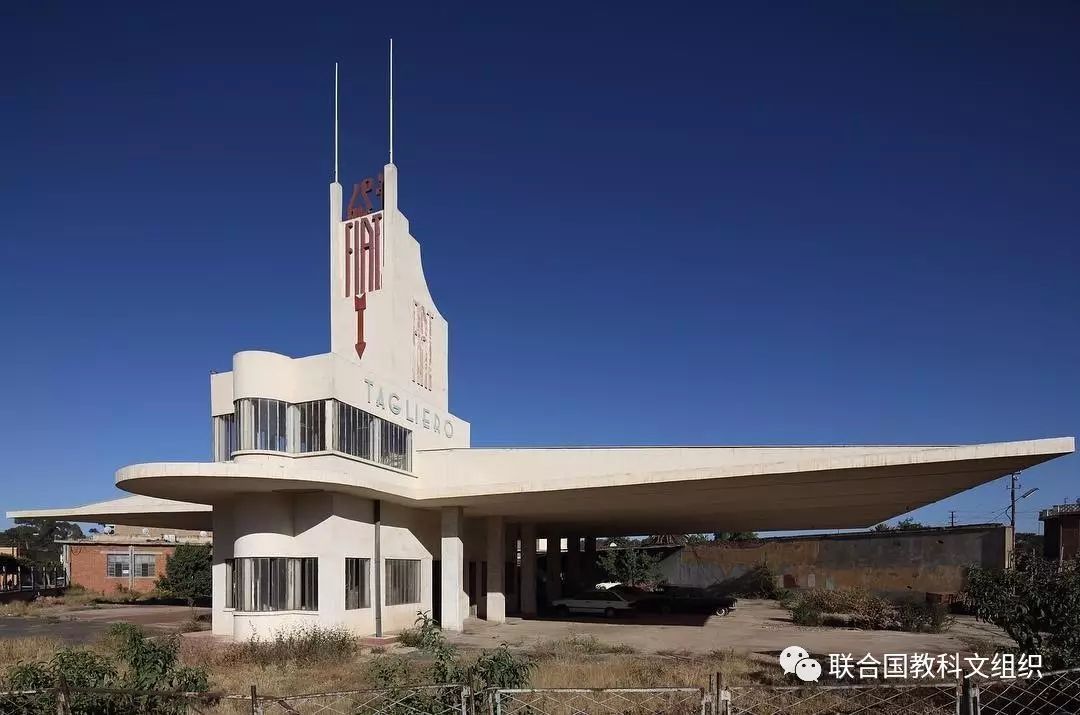 Asmara: a Modernist City of Africa (Eritrea) © Asmara Heritage Project
Asmara: a Modernist City of Africa (Eritrea) © Asmara Heritage Project
厄立特里亚的首都海拔2000米,始建于1890年代,由意大利殖民者的军事基地发展而来。1935年后,阿斯马拉经历了大规模的城市建设规划,政府大楼、公寓、商业楼、教堂、清真寺、犹太教堂、电影院、旅馆等等,全部依照当时的意大利理性主义建筑范式而建。这项遗产覆盖的区域是1893年到1941年多轮城市规划的结果,也包括ArbateAsmera和Abbashawel两个居民区非规划范围内的民间建筑。阿斯马拉是20世纪初早期现代主义城市建设在非洲背景下的应用的杰出范例。
Locatedat over 2000 metres above sea level, the capital of Eritrea developed from the 1890's onwards as a military outpost for the Italian colonial power. After 1935, Asmara underwent a large scale programme of construction applying the Italian rationalist idiom of the time to governmental edifices, residential and commercial buildings, churches, mosques, synagogues, cinemas, hotels, etc. The property encompasses the area of the city that resulted from various phases of planning between 1893 and 1941, as well as the indigenous unplanned neighbourhoods of Arbate Asmera and Abbashawel. It is an exceptional example of early modernist urbanism at the beginning of the 20th century and its application in an African context.
8塔普塔普阿泰(法国)
Taputapuātea (France)
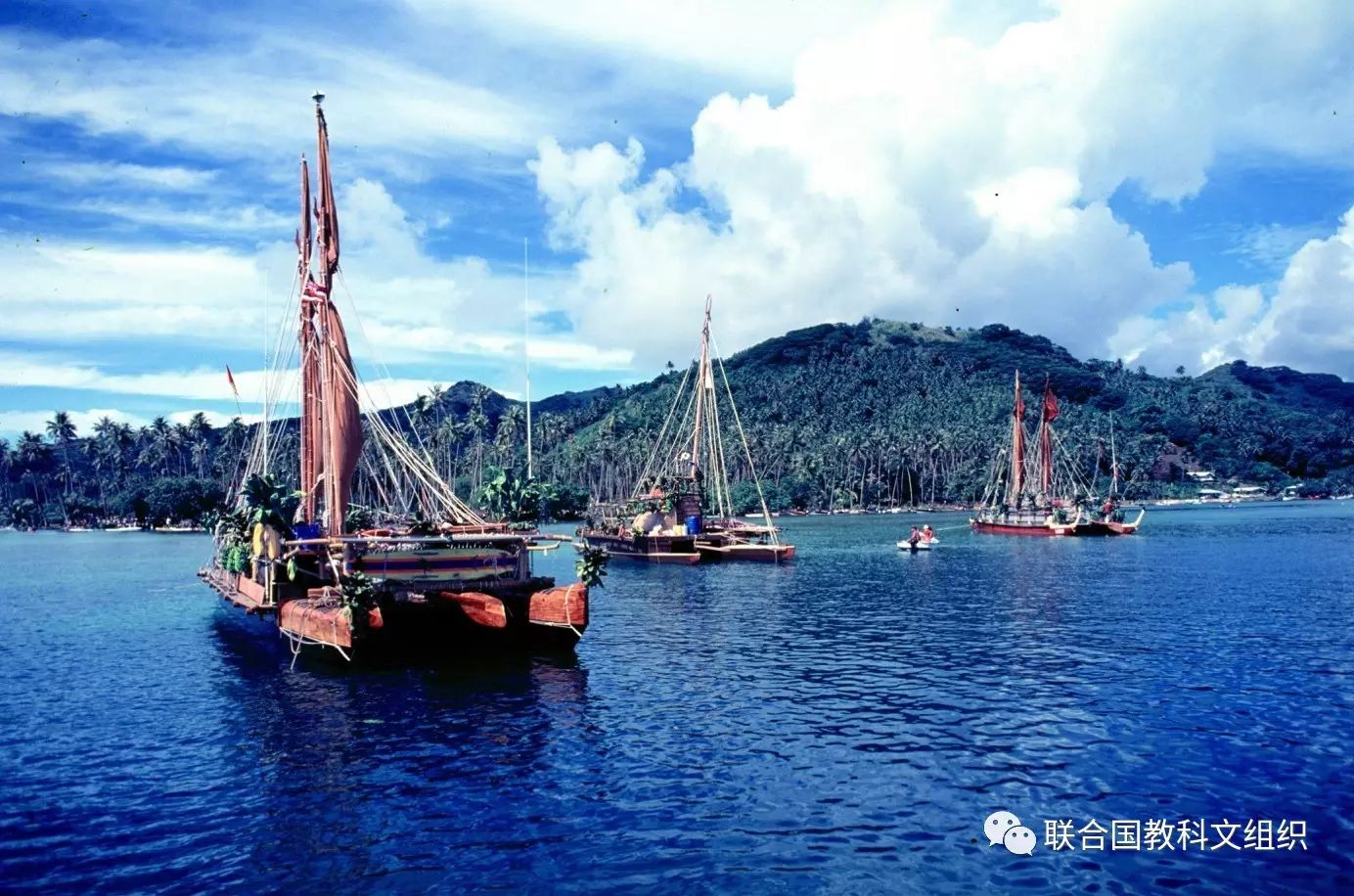 Taputapuātea © GIE Tourisme / SCP
Taputapuātea © GIE Tourisme / SCP
赖阿特阿岛上的塔普塔普阿泰位于波利尼西亚三角的中心,这个三角地带是太平洋上一块散布着岛屿的区域,是地球上最后一处人类社会定居之地。遗址包括两座绿林掩映的山谷、一块泻湖与珊瑚礁、一片海洋。在这片文化及海洋景观的中心座落着塔普塔普阿泰——毛利会堂,一个具有政治、礼仪和丧葬功能的空间。其突出的特点是铺砖的庭院,并在中心所放置一块大石头。毛利会堂遍布波利尼西亚,是生者的世界与先人的世界交汇之所。塔普塔普阿泰是波利尼西亚原住民千年文明独一无二的见证。
Taputapuāteaon Ra'iatea Island is at the centre of the “Polynesian Triangle,” a vast portion of the Pacific Ocean, dotted with islands, and the last part of the globe to be settled by humans. The property includes two forested valleys, a portion of lagoon and coral reef and a strip of openocean. At the heart of the property is the Taputapuātea marae complex, apolitical, ceremonial and funerary centre. It is characterized by a paved courtyard with a large standing stone at its centre. Widespread inPolynesia, the marae were places where the world of the living intersects the world of the ancestors. Taputapuātea is an exceptional testimony to 1,000 years of mā'ohi civilization.
9施瓦本汝拉山的洞穴与冰川时代的艺术(德国)
Caves and Ice Age Art in the Swabian Jura (Germany)
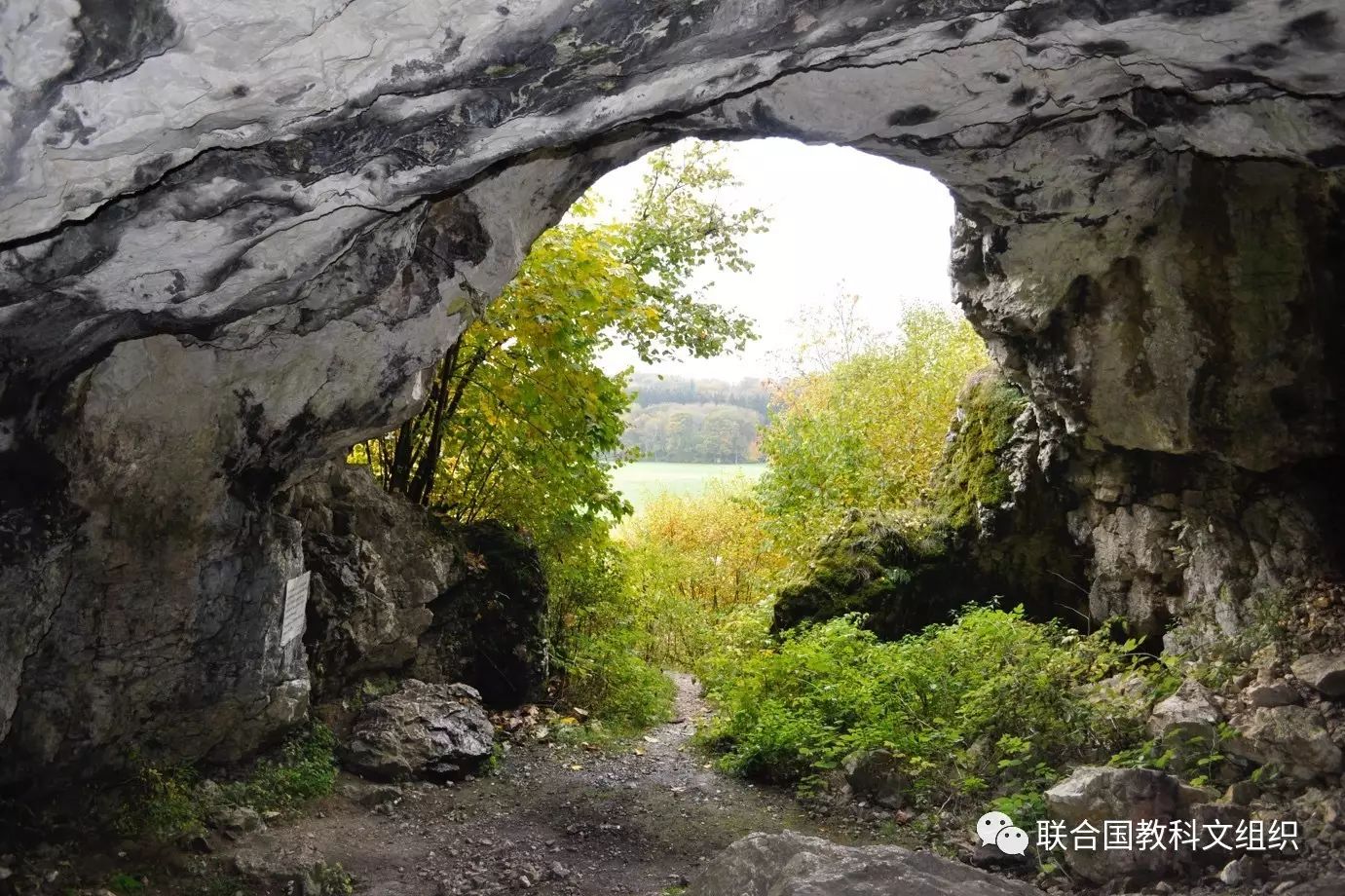 Inside view of Bockstein Cave © Landesamt für Denkmalpflege (LAD) im Regierungspräsidium Stuttgart
Inside view of Bockstein Cave © Landesamt für Denkmalpflege (LAD) im Regierungspräsidium Stuttgart
现代人最早于43000年前的冰川时代到达欧洲。他们其中的一处定居点位于今天德国南部的施瓦本汝拉山。1860年起在此处六座洞穴开展的考古工作发掘了43000年到33000年前的古老遗迹。包括小型动物雕像(洞狮、猛玛、马、牛……)、乐器、首饰等等。此外还有一些半人半兽小雕像以及一个女性形象的小雕像。这一考古遗址是对世界上最早一批象征艺术的一个见证,可以帮助我们进一步理解人类艺术的起源与发展。
Modernhumans first arrived in Europe 43,000 years ago during the last ice age. One of the areas where they took up residence was the Swabian Jura in southern Germany. Excavated from the 1860s, six caves have revealed items dating from 43,000 to 33,000 years ago. Among them are carved figurines of animals (including cave lions, mammoths, horses and cattle), musical instruments and items of personal adornment. Other figurines depict creatures that are half animal, half human and there isone statuette of a female form. These archaeological sites feature someof the oldest figurative art worldwide and help shed light on the origins of human artistic development.
